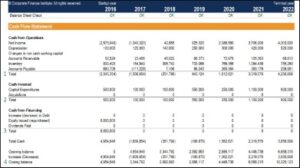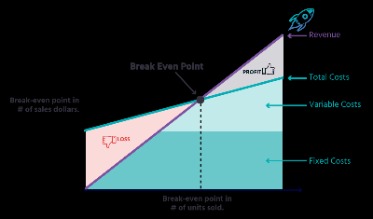Content
- Method to Get Straight Line Depreciation (Formula)
- How to Deduct a Charitable Contribution of Depreciated Assets
- How To Determine an Asset’s Salvage Value
- Depreciation Methods Business Owners Need to Know
- Why do we use straight-line depreciation?
- How is straight-line depreciation different from other methods?
- How does straight-line depreciation factor into my accounting?
Depending on how the asset’s salvage value is changing, you may want to switch depreciation accounting methods and report it to the IRS. You must subtract the asset’s accumulated depreciation expense from the basis cost. Otherwise, you’d be “double-dipping” on your tax deductions, according to the IRS. Have your business accountant or bookkeeper select a depreciation method that makes the most sense for your allowable yearly deductions and most accurate salvage values.
Recoverable amount is the higher of an asset’s fair value less costs to sell and its value in use. The DDB depreciation method is best applied to assets that quickly lose value in the first few years of ownership. This is most frequently the case for things like cars and other vehicles but may also apply to business assets like computers, mobile devices and other electronics. Residual value is the projected value of a fixed asset when it’s no longer useful or after its lease term has expired.
Method to Get Straight Line Depreciation (Formula)
This method is geared towards assets that lose value quickly or produce at a higher capacity during the early years. Salvage value is the estimated resale value of an asset at the end of its useful life. It is subtracted from the cost of a fixed asset to determine the amount of the asset cost that will be depreciated. Thus, salvage value is used as a component of the depreciation calculation. One of the first things you should do after purchasing a depreciable asset is to create a depreciation schedule.

The declining balance method provides larger deductions sooner, minimizing tax exposure. Salvage value can be described as the estimated value which a company will realise as a part of terminal cashflow after utilizing asset throughout its useful life. Different valuation techniques are prescribed for salvage value calculation in different applicable accounting standards. Salvage value plays an important role in determining the yearly depreciation charge for an asset. Generally, salvage value is very minimal as compared to its original cost as assets gets fully utilized.
How to Deduct a Charitable Contribution of Depreciated Assets
The company will record a depreciation expense of $1,600 per year for the next 5 years. At the end of the useful life, the book value of the asset will be equal to the salvage value of $2,000. The estimated salvage price a business believes it would be able to get for the asset by selling it at the end of its useful life. It just needs to prospectively change the estimated amount to book to depreciate each month. There are six years remaining in the car’s total useful life, thus the estimated price of the car should be around $60,000.
- Some assets are truly worthless when they’re no longer of use to your business.
- Similar to declining balance depreciation, sum of the years’ digits (SYD) depreciation also results in faster depreciation when the asset is new.
- When this happens, a loss will eventually be recorded when the assets are eventually dispositioned at the end of their useful lives.
- This means that the computer will be used by Company A for 4 years and then sold afterward.
- Not all assets are purchased conveniently at the beginning of the accounting year, which can make the calculation of depreciation more complicated.
- There are six years remaining in the car’s total useful life, thus the estimated price of the car should be around $60,000.
Even though land is considered a fixed asset, it is never depreciated since its useful life is unlimited. Buildings and some land improvements may qualify for depreciation, but not the land itself. It is best for smaller businesses that are looking for a simple way to calculate depreciation. Wallmart Inc. purchased machinery costing $8,00,000 and decided to have a depreciation rate of 10% PA for the period of 5 years.
How To Determine an Asset’s Salvage Value
This means that ABC will depreciate $90,000 of the asset cost over five years, leaving $10,000 of the cost remaining at the end of that time. ABC expects to then sell the asset for $10,000, which will eliminate the asset from ABC’s accounting records. When this happens, a loss will eventually be recorded when the assets are eventually dispositioned at the https://kelleysbookkeeping.com/ end of their useful lives. Auditors should examine salvage value levels as part of their year-end audit procedures relating to fixed assets, to see if they are reasonable. If it is too difficult to determine a salvage value, or if the salvage value is expected to be minimal, then it is not necessary to include a salvage value in depreciation calculations.
- Unilever purchased a vehicle costing $10,00,000 with a useful life of 10 years, applicable depreciation is $80,000 per year.
- The carrying value of the asset is then reduced by depreciation each year during the useful life assumption.
- If a company wants to front load depreciation expenses, it can use an accelerated depreciation method that deducts more depreciation expenses upfront.
- The fixed assets are expected to be useful for five years and then be sold for $200k.
- In order words, the salvage value is the remaining value of a fixed asset at the end of its useful life.
- Revalued assets are depreciated in the same way as under the cost model (see below).
This method assumes that the salvage value is a percentage of the asset’s original cost. To calculate the salvage value using this method, multiply the asset’s original cost by the salvage value percentage. The useful life assumption estimates the number of years an asset is expected to remain productive and generate revenue. When you’re using straight-line depreciation, you can set up a recurring journal entry in your accounting software so you don’t have to go in and manually prepare one every time. Once you’ve determined the asset’s salvage value, you’re ready to calculate depreciation. Be careful not to consider a similar asset’s asking price since, in most used-asset markets, things will sell below their asking price.
Second, companies can rely on an independent appraiser to assess the value. Third, companies can use historical data and comparables to determine a value. Both declining balance and DDB require a company to set an initial salvage value to determine the depreciable amount.

In general, the salvage value is important because it will be the carrying value of the asset on a company’s books after depreciation has been fully expensed. It is based on the value a company expects to receive from the sale of the asset at the end of its useful life. In some cases, salvage value may just be a value the company believes it can obtain by selling a depreciated, inoperable asset for parts. Amortization is always calculated using the straight-line method of depreciation.
Revalued assets are depreciated in the same way as under the cost model (see below). Calculating DDB depreciation may seem complicated, but it can be easy to accomplish with accounting software. Just because you may need to calculate your depreciation amount manually each year doesn’t mean you can change methods. If it costs the company $200 to move the equipment to the dumping ground, then the residual value of that asset is $4,800 ($5,000–$200). In the case of leasing, the lessor determines the residual value based on future estimates and past models.
Depreciation is a way for businesses to allocate the cost of fixed assets, including buildings, equipment, machinery, and furniture, to the years the business will use the assets. In regards to depreciation, salvage value (sometimes called residual or scrap value) is the estimated worth of an asset at the end of its useful life. Assets with no salvage value will have the same total depreciation as the Accounting Methods To Determine Salvage Value cost of the asset. For specific assets, the newer they are, the faster they depreciate in value. In these situations, the declining balance method tends to be more accurate than the straight-line method at reflecting book value each year. Another accelerated depreciation method, SYD results in larger depreciation amounts early in the life of an asset, but not as aggressively as declining balance.
Depreciation, however, can be calculated using straight-line or accelerated methods. For tax purposes, your company can report higher expenses in the early years of an asset’s useful life. Double declining balance is the most widely used declining balance depreciation method, which has a depreciation rate that is twice the value of straight line depreciation for the first year.
- The double-declining balance (DDB) method uses a depreciation rate that is twice the rate of straight-line depreciation.
- To calculate the annual depreciation expense, the depreciable cost (i.e. the asset’s purchase price minus the residual value assumption) is divided by the useful life assumption.
- It’s just an estimate since your business may be able to continue using an asset past its useful life without incident.
- It is worth remembering that companies owning several costly fixed assets such as vehicles, medical equipment and other heavy machinery may consider buying residual value insurance.
